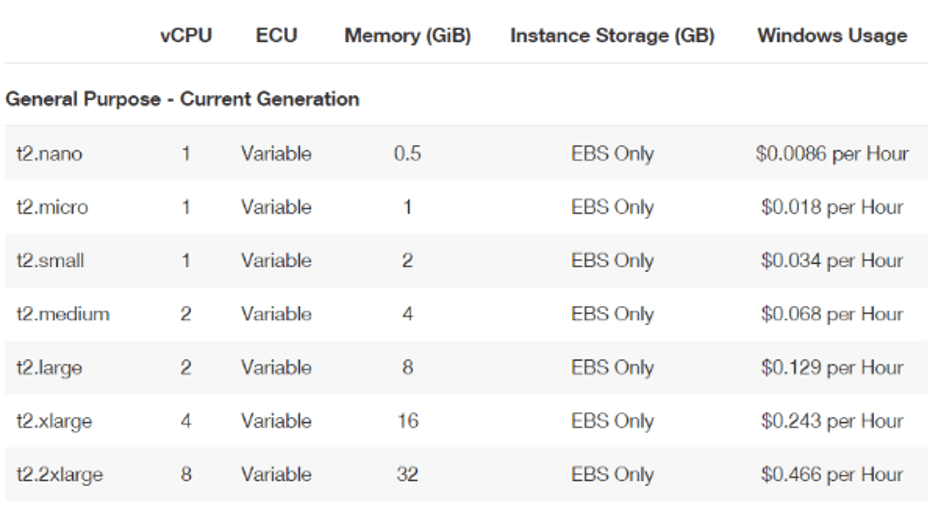

With this quick analysis it smells like the main benefactor here is AWS who can run more workloads on less hardware and avoid passing those savings to their customers. Also splitting support processes into sidecar containers would increase cost further. I thought even EC2s can be managed meaning patching and maintenance is done by AWS. The downside of Fargate is that it costs more, and you cannot (currently) mount volumes.
#Aws fargate vs ec2 pricing full
Of course an EC2 instance is running a full operating system and has more overhead than a container, but it still seems unlikely that you could actually save money with Fargate especially in CPU-bound workloads. So the value proposition of Fargate is to just run the apps you need, without all the undifferentiated heavy lifting that servers require. So Fargate is somewhat cheaper, but in return you're getting 1/8th of the vCPUs and 1/2 of the memory. The cost could be roughly halved by moving to t3.nanos.ĪWS pricing calculator does not support Fargate, so these numbers are based on Fargate pricing page based on ten services with minimum specs (0.25 vCPU, 0.5GB memory): Amazon EC2 On-Demand instances (monthly): 90.52 USD.Amazon Elastic Block Storage (EBS) pricing (monthly): 36.00 USD.The cost for ten t3.micro instances (2 vCPU, 1GB mem) with 10GB EBS gp2 SSD volumes each in us-west-1 region: The numbers below are based on the AWS pricing calculator. The C5 instances are designed for processing compute-heavy applications like 1. They used EC2 instances to deploy applications in the AWS cloud. You will learn to distinguish among several AWS compute services, including Amazon EC2, AWS Lambda, and Amazon ECS. Rather surprisingly using Fargate would cost almost as much as running the same workload on EC2 virtual machines even when minimizing the container specs. When container services were not available, users would run their applications on virtual machines. In this case the workload itself was perfectly suited for a container: a single process with single configuration file that was mostly network-bound running on t3.micro instances. In theory this should have been the case, as a container has less "fat" compared to a full virtual machine. With this in mind, we will compare costs between ECS + Fargate and App Runner next. Third, App Runner comes with the ability to scale down to 0, as discussed in the previous section. I recently checked the pricing model for Amazon Fargate to see if migrating a fair number of EC2 instance-based workloads to containers would save money. Second, Fargate does provide spot pricing with a discount of up to 70 compared to the on-demand price listed above.


 0 kommentar(er)
0 kommentar(er)
